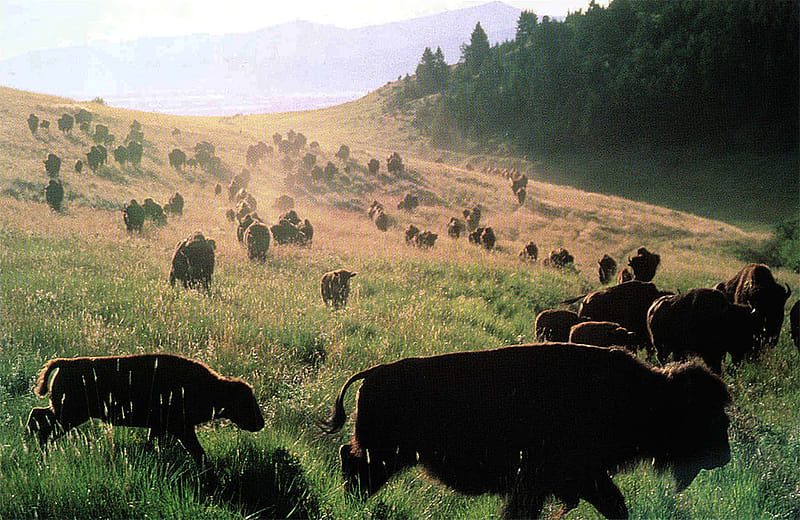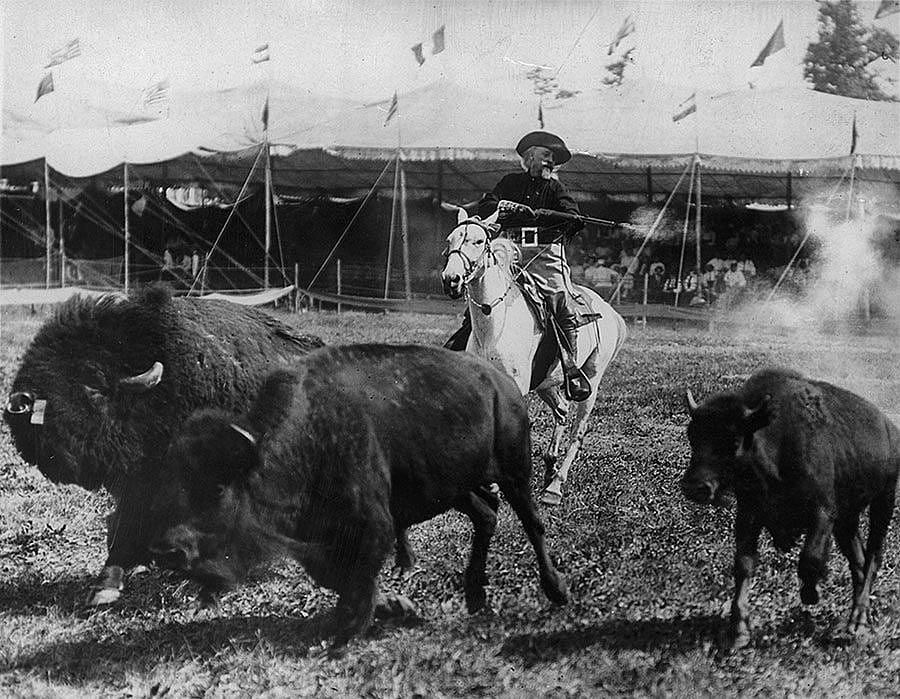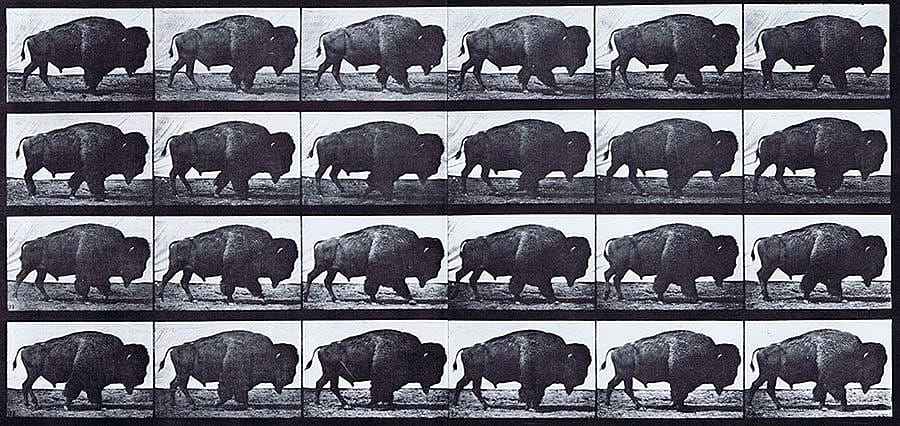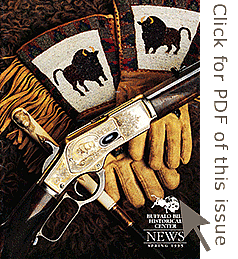
The Buffalo, a Symbol for Conservation – Points West Online
Originally published in Points West magazine
Spring 1995
The Buffalo, A Symbol for Conservation
By Paul Fees
Former Ernest S. Goppert Curator, Buffalo Bill Museum
Early European and American migrants West believed that North America’s natural resources were inexhaustible, that the great buffalo herds were imperishable. Plains Indian people similarly believed that nature was boundless, that the buffalo sprang from the earth in endless numbers, ever to be renewed.
By the end of the nineteenth century, all people began to understand the limits of abundance. The near extinction of the beaver had been noted; the disappearance of the elk and the grizzly from the Great Plains was regarded as a necessary and even desirable consequence of agriculture. But the demise of the American bison in the 1880s inflamed the popular mind and rang alarms in the scientific community.

William F. Cody, as Buffalo Bill, conveyed to the American public the complex of images and information represented by the buffalo. In the Wild West show as well as the popular press, the buffalo was a symbol of frontier youth and adventure, of the western wilderness and nature’s bounty, and of Native America. It soon became a rallying symbol for the growing conservation movement.
Buffalo Bill himself, who once represented the agents of the buffalo’s destruction, now stood for the agents of preservation and recovery. As an often-interviewed authority on western issues, Cody became an advocate of big-game hunting laws and limited seasons. By the mid-1880s, Buffalo Bill’s Wild West nurtured perhaps the largest extant bison herd in the United States and exhibited it to rapt audiences on two continents.

Post 097
Written By
Nancy McClure
Nancy now does Grants & Foundations Relations for the Center of the West's Development Department, but was formerly the Content Producer for the Center's Public Relations Department, where her work included writing and updating website content, publicizing events, copy editing, working with images, and producing the e-newsletter Western Wire. Her current job is seeking and applying for funding from government grants and private foundations. In her spare time, Nancy enjoys photography, reading, flower gardening, and playing the flute.










